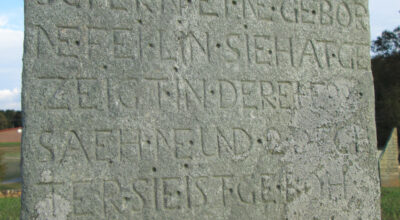The lightning bugs in Danville return in full force
Published 12:00 am Monday, July 28, 2014
A few years back, I was worried about lightning bugs, namely, their local survival in Danville.
Certain groups of amphibians are dwindling in particular places, and, as opposed to the days of my youth, I also wasn’t seeing as many lightning bugs (“fireflies”, if you are a Yankee).
I wondered if the decreasing number of cool, moist, plodding creatures ( except in the case of the frog ) was connected with an apparent decline of a creature possessing an abdominal liquid which coldly ignites from twilight till dawn.
I worried about those seemingly scarce “bugs” (more properly, “beetles”), because during that time, the only comparable nighttime lights of same “apparent” size were the stars. Unlike those insects, dipping to the ground just before lighting up, the stars, of course, remain high above ( as we should always want them to, “terrible” things that they really are).
As a child, I always wondered why lightning bugs decreased their altitude of flight before producing light. Years later, on TV and in the movies, the Klingons of Star Trek fame had to always power down their cloaking device before firing their torpedoes. I doubt that this is the same as the lightning bug’s descent prior to “firing”.
Last summer, the only lightning bugs I observed in great number were those in the old cemetery adjacent my apartment. This cemetery was only “live” from 1830 to 1920, some graves adorned with those metal Maltese crosses bearing the abbreviation “CSA”.
So many lightning bugs were clustered there that it looked like they were assembling to dip down and “blink on” to pay homage to graves where flowers hadn’t been laid for decades. Danville’s Grove Street cemetery is shaded by great oaks and has a certain “moistness” which insects probably like.
With so many lightning bugs gathered among the dead, the refuge afforded early Christians by the Catacombs came to mind. It seemed as if the little “beacons” were sheltering among the tablets, both surrounded by the later-built, WPA granite wall.
A sight in the wee hours a couple of months ago hinted to me that the lucent bugs might locally be back in force. Scientists were predicting a possible meteor storm, as it was Earth’s first venture into a certain comet’s debris-strewn path.
I went outside about 3 a.m. and watched for a while. No meteor lit the sky, but another light did, blinking on and off between the tops of nearby trees.
After all these years of sky observing, I knew that it was neither a plane, satellite, nor reflective piece of tumbling space junk. The color said “lightning bug,” in fact, the highest flying specimen I have ever seen.
Locally, the lightning bug seems to have returned to its previous number and prior cumulative magnitude.
I have even spotted them diurnally crawling on bushes and windows as in my youth.
I remember reading back then that scientists were working on harnessing the lightning bug’s “cold luminescence”, and wonder just how far we have progressed with that. Maybe those glow sticks for trick -or-treaters, nighttime exercise walkers, stranded motorists or for waving at rock concerts count (sort of).
Upon hearing or reading the term “lightning bug,” the following comes back to me:
I am in the front yard of my childhood home on the Old Concord Road.
Across the road, Mr. W.A. Cline’s couple of gravel piles resemble silhouetted pyramids in the western, post-sunset twilight (the numerous piles there now sort of mimic an evening silhouetted view of the Great Smokies viewed from a Black Mountain front porch rocking chair).
I’m darting about, trying to catch lightning bugs, while holding a Mason jar (what else), with holes of sub-lightning bug width punched into its metal lid.
My jar is full, but its impressive “lightning bug light- power” really only equals a fraction of the light -power of one candle.
I am looking at that pulsating, syncopated glow within my jar, and also see an unchanging luminescence on my fingers and palms.
In reflection, I was a little too forceful in procuring some of them, wiping their lifeless forms from my hands, upon which that equally lifeless shine remained. I later released the living, blinking ones from the jar before going inside.
Afterwards, a good hand-washing removed that “ectoplasmic essence”, along with the unforgettable “lightning bug smell.”
It only weighed briefly on such a young soul, with much greater ease of erasure than that which Lady Macbeth “saw”; but just the same, contrasting with the Mason jar’s intermittent flickering was the non-pulsating, fixed “glow of death” on my childhood hands.
Mack Williams lives in Danville.


